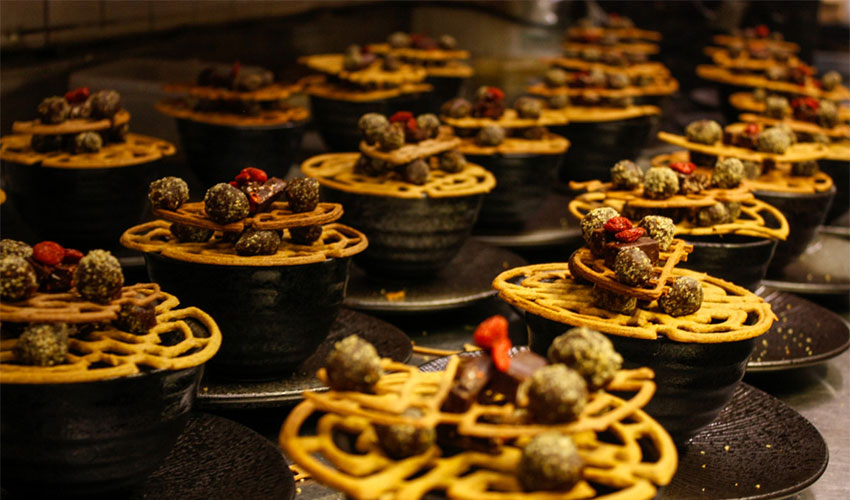Upprinting Food, Using Food Waste to 3D Print Sustainable Meals

Upprinting Food is a startup that was developed in the Netherlands. Its main objective is to create 3D printed dishes from all kinds of food waste. Elzelinde van Doleweerd and Vita Broeken are behind this circular economy project that aims to give a second life to all food that is thrown away even though it could still be eaten. They are able to create durable dishes with a unique design. To better understand the projects of this young company, we met Vita, co-founder of Upprinting Food; she was able to share her vision of a more sustainable world with us with the use of 3D technologies.
3DN: How did you discover 3D printing technologies?
It was during my studies in industrial design that we were taught different manufacturing techniques. Many have used a 3D printer to quickly make prototypes and I must say that we were bitten pretty quickly!

3DN: How did the idea of creating Upprinting Food come about?
Upprinting Food started when my partner Elzelinde completed her final year project. In addition to her degree in industrial design, she specialised in food technology at the University of Wageningen. She combined her knowledge (and passion) in food and sustainability to design this project. For my part, I knew I wanted to focus on food waste and the opportunity presented itself to combine this with a 3D printer. This was very well received and we were invited to present Upprinting Food at the Beijing Design Week and the Design Week in the Netherlands. Subsequently, we decided to create a company around this.
3DN: Can you explain in detail how you processed the food materials and waste to 3D print them?
Currently, when we organise an event, we go to a supermarket to pick up products that will be thrown away. It can be bread, fruit or vegetables. They are good products but they can no longer be sold because they are either baked on site like bread or too ripe or too damaged (in the case of fruits and vegetables). We completely dehydrate the bread and mix it with a flour-like powder. At the same time, the crushed fruits and vegetables are mixed, which we then combine with the bread powder. The result is a type of purée ready to be extruded in which herbs or spices are added according to the recipe required.

Different ingredients are mixed to obtain the purée which will be extruded | Credits: Upprinting Food
3DN: What 3D technology do you use? How does it work?
Currently, we use extrusion technology similar to melt deposition technology and replace the extruder with a syringe with a nozzle. We fill this syringe with the food purée composed of residual food. A motor applies pressure to the syringe and the purée is extruded through the nozzle. We can make beautiful designs directly on the computer and 3D print them.

The 3D printer used in the project | Credits: Upprinting Food
3DN: In your opinion, what is the role of additive manufacturing in the development of sustainable projects?
3D printing is able to create unique and invaluable products from less valuable materials. The 3D printer is a technology of the future that allows us to create objects that would otherwise be impossible to make. It’s a great way to transform materials (whether it’s food, plastic, anything in fact) and create something new.

Photo Credits: Upprinting Food
3DN: Any last words to our readers?
Don’t throw away the food! Take a serious look at this 3D printing technology with its infinite possibilities. Find more information on our official website HERE.
What do you think of Upprinting Food? Let us know in a comment below or on our Facebook and Twitter pages! Sign up for our free weekly Newsletter here, the latest 3D printing news straight to your inbox!






